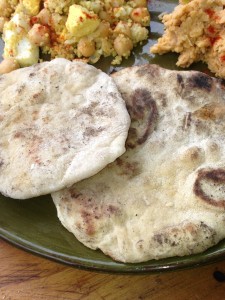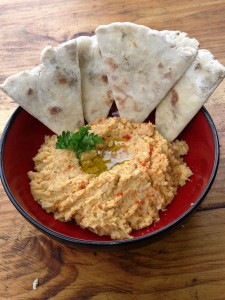One of my favorite treats from the United Kingdom (UK) are Scotch Eggs. I have seen them served with mustard, gravy, and cheese, but my favorite way of eating them is with gravy and horseradish.
What is a Scotch Egg?
A Scotch egg consists of a shelled hard-boiled egg, wrapped in a sausage meat mixture, coated in breadcrumbs, and deep-fried. In the UK, Scotch eggs are  commonly eaten cold, typically with salad and pickles. Scotch eggs were traditionally a picnic food and homemade. In the UK, pre-packed, plastic-wrapped Scotch eggs are commonly available in supermarkets, convenience stores and motorway service stations. Miniature versions of Scotch eggs are also widely available in British supermarkets, and are sold under the name ‘savoury eggs’, ‘picnic eggs’, ‘party eggs’, ‘snack eggs’ or similar. These contain a chopped, rather than whole, egg filling, sometimes combined with mayonnaise or chopped bacon.
commonly eaten cold, typically with salad and pickles. Scotch eggs were traditionally a picnic food and homemade. In the UK, pre-packed, plastic-wrapped Scotch eggs are commonly available in supermarkets, convenience stores and motorway service stations. Miniature versions of Scotch eggs are also widely available in British supermarkets, and are sold under the name ‘savoury eggs’, ‘picnic eggs’, ‘party eggs’, ‘snack eggs’ or similar. These contain a chopped, rather than whole, egg filling, sometimes combined with mayonnaise or chopped bacon.
Contrary to popular belief, Scotch Eggs were actually invented by the famous London department store, Fortnum & Mason in 1851. (http://www.en.wikipedia.org)
In the United States, many “English-style” pubs and eateries serve fresh-made Scotch eggs. These are usually served hot, with dipping sauces such as ranch dressing, hot sauce, or hot mustard sauce. Even the Minnesota State Fair, true to its fair tradition, Scotch eggs are served on a stick. Due to English influence, some fast-food restaurants in West Africa offer Scotch eggs alongside their other menu items. In Nigeria, Tantalizers and Mr. Biggs both prominently feature Scotch eggs. Some of Britain’s culinary favorites also crossed over to the Indian sub-continent and there is a popular Indian dish called nargisi kofta also known in English as Curried Scotch Eggs. The spices used suggest a Moghul influence.
When making Scotch eggs at home, cooks may fry and then bake or microwave the Scotch eggs to ensure that the sausage is cooked all the way through. Some recipes are more challenging than others, but my recipe below, I found, is one of the easier ones to follow.
Scotch Eggs Ingredients
6 hard-cooked eggs, well chilled
1 pound breakfast sausage (I recommend Woodsend or other Amish brand Sausage or vegetarian sausage paste may be used)
1/2 cup flour
2 eggs, beaten
3/4 cup fine bread crumbs
Vegetable oil for frying
Peel eggs and set aside. Divide sausage into 6 portions. Roll each egg in flour and with hands press a portion of the sausage around each egg.
Dip sausage-wrapped eggs into beaten eggs and roll in bread crumbs. Heat vegetable oil to 350 degrees Fahrenheit.
Cook each egg in oil about 4-5 minutes or until sausage is cooked and browned. Drain on paper toweling. Serve warm.
Horseradish Cream Sauce
This is a traditional sauce. Through the demonstration, we used real horseradish root, but you can buy prepared horseradish and follow the second steps of instructions.
Prepared horseradish
8/10″ horseradish root
2 tbsp water
1 tbsp white vinegar
pinch of salt
remove skin from horseradish root and mince. add water, vinegar, and salt and pulverize in mortar and pestle. do not breathe in mixture.
Cream Sauce
3 tbsp of the prepared horseradish mixture
1/4 cup of sour cream
1 tsp of dijon mustard
1 tsp mayonaise
1 tbsp of chopped green onion (greens only)







